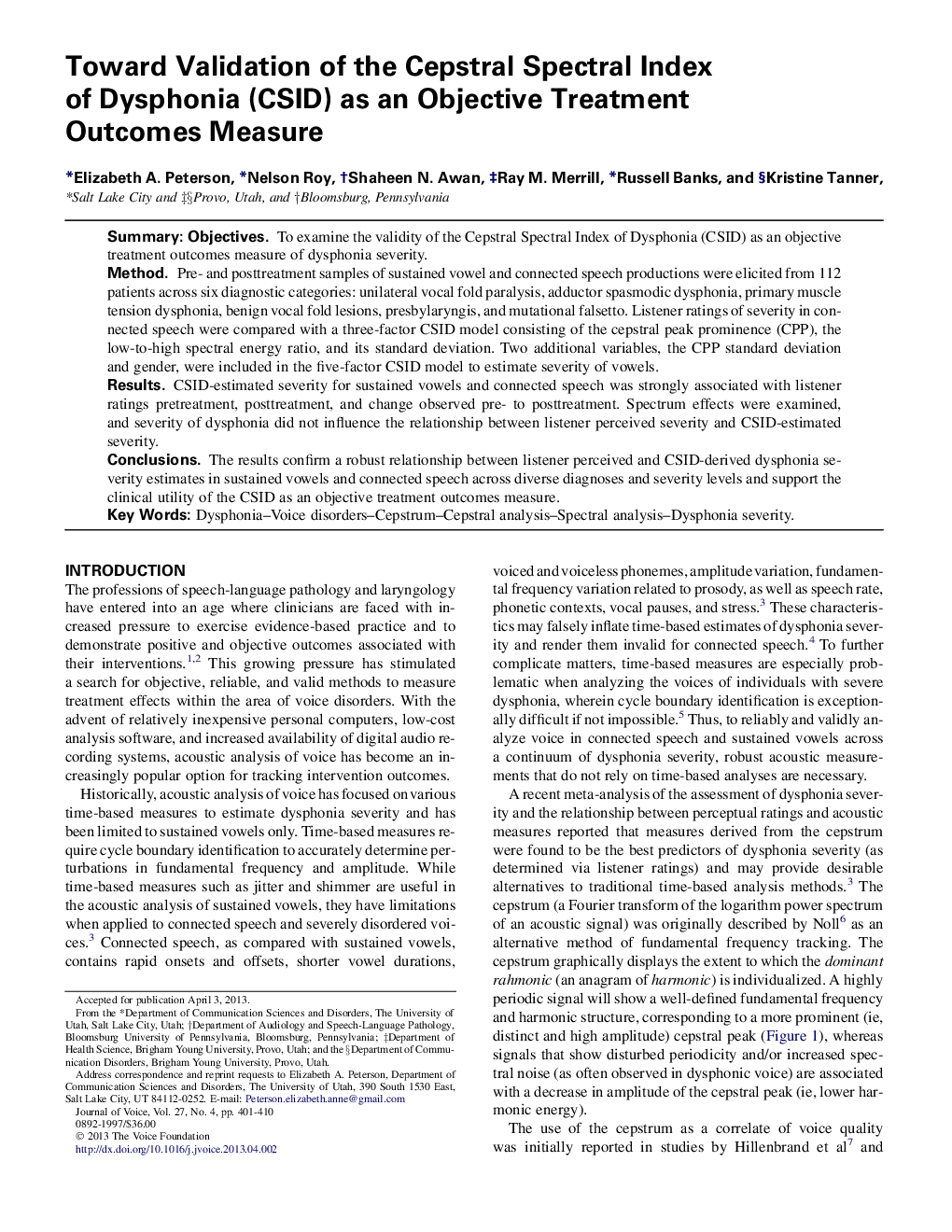| Article ID | Journal | Published Year | Pages | File Type |
|---|---|---|---|---|
| 1102103 | Journal of Voice | 2013 | 10 Pages |
SummaryObjectivesTo examine the validity of the Cepstral Spectral Index of Dysphonia (CSID) as an objective treatment outcomes measure of dysphonia severity.MethodPre- and posttreatment samples of sustained vowel and connected speech productions were elicited from 112 patients across six diagnostic categories: unilateral vocal fold paralysis, adductor spasmodic dysphonia, primary muscle tension dysphonia, benign vocal fold lesions, presbylaryngis, and mutational falsetto. Listener ratings of severity in connected speech were compared with a three-factor CSID model consisting of the cepstral peak prominence (CPP), the low-to-high spectral energy ratio, and its standard deviation. Two additional variables, the CPP standard deviation and gender, were included in the five-factor CSID model to estimate severity of vowels.ResultsCSID-estimated severity for sustained vowels and connected speech was strongly associated with listener ratings pretreatment, posttreatment, and change observed pre- to posttreatment. Spectrum effects were examined, and severity of dysphonia did not influence the relationship between listener perceived severity and CSID-estimated severity.ConclusionsThe results confirm a robust relationship between listener perceived and CSID-derived dysphonia severity estimates in sustained vowels and connected speech across diverse diagnoses and severity levels and support the clinical utility of the CSID as an objective treatment outcomes measure.
